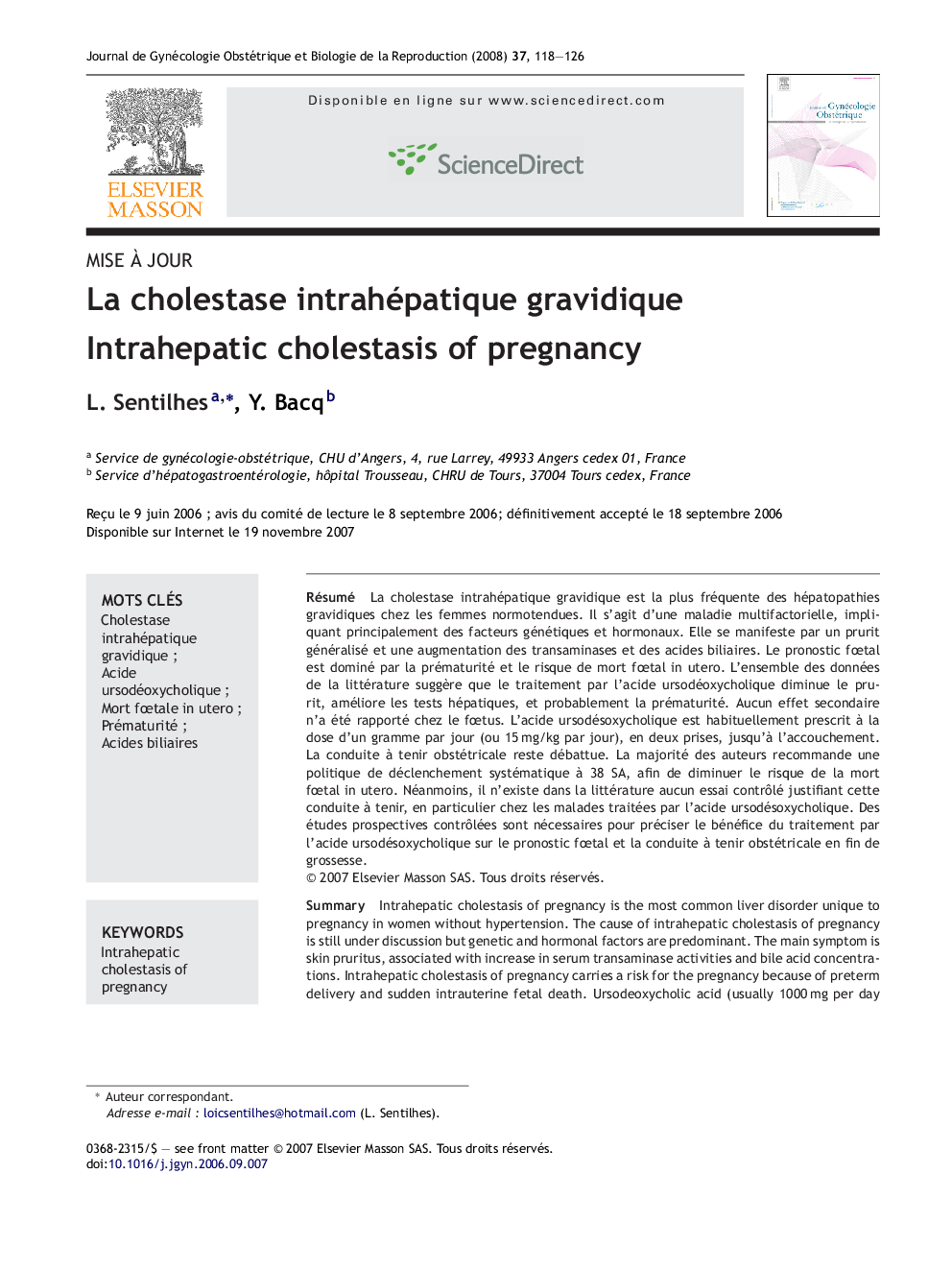| Article ID | Journal | Published Year | Pages | File Type |
|---|---|---|---|---|
| 3273952 | Journal de Gynécologie Obstétrique et Biologie de la Reproduction | 2008 | 9 Pages |
Abstract
Intrahepatic cholestasis of pregnancy is the most common liver disorder unique to pregnancy in women without hypertension. The cause of intrahepatic cholestasis of pregnancy is still under discussion but genetic and hormonal factors are predominant. The main symptom is skin pruritus, associated with increase in serum transaminase activities and bile acid concentrations. Intrahepatic cholestasis of pregnancy carries a risk for the pregnancy because of preterm delivery and sudden intrauterine fetal death. Ursodeoxycholic acid (usually 1000Â mg per day or 15Â mg/kg per day) is currently the most effective pharmacologic treatment. Ursodeoxycholic acid reduces pruritus, transaminases and bile acid levels and probably prematurity without adverse effects. Obstetric management is still under debate. The majority of authors recommend active management with elective delivery usually before or at 38 weeks of gestation according the severity of cholestasis. Prospective controlled studies are required to confirm the benefit of ursodeoxycholic acid treatment on fetal outcome and to clarify the obstetrical management near term.
Keywords
Related Topics
Health Sciences
Medicine and Dentistry
Endocrinology, Diabetes and Metabolism
Authors
L. Sentilhes, Y. Bacq,
